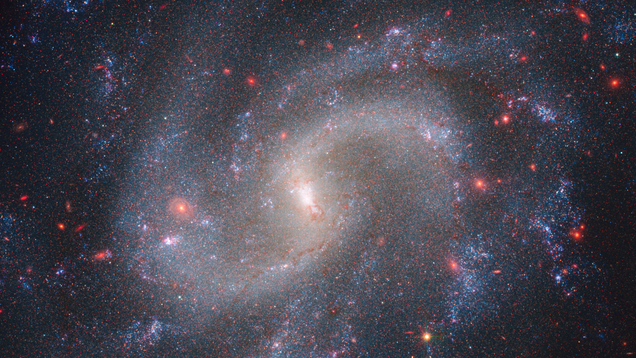The rate of the universe’s expansion has vexed astronomers for decades. Called , the figure is quite different depending on how you get to it—fittingly, a source of constant befuddlement to astrophysicists. Now, a team of astronomers have calculated the expansion rate with greater precision using the Webb Space Telescope, a $10 billion space observatory , and which has been making scientific observations at infrared wavelengths .
Using Webb data, the team managed to reduce the noise persistent in Hubble observational data of the stars that are used to measure the constant; the team’s research is on the preprint server arXiv and are set to publish in . There are two ways of measuring the universe’s expansion, which offer up different rates for it. One way is by predicting the rate from the cosmic microwave background, the earliest light we can see, which dates to about 300,000 years after the Big Bang.
The other method is by studying a group of variably bright stars called the Cepheids, which are great for measuring the distance of galaxies and their redshifts, or how light emanating from those galaxies has been stretched by the universe’s expansion. The rates derived from these two approaches lead to different Hubble constants; the discrepancy is often referred to as the “Hubble tension,” and could be due to errors in astronomers’ calculations or hitherto unknown (and thus unaccounted for) physics. Before Hubble launched in 1990, estimates on the timeline of the universe’s expansion varied between 10 billion and 20 billion years—a large range—according to a NASA accompanying the new research written by Adam Riess, an astronomer at the Space Telescope Science Institute and Johns Hopkins University, and lead author of the new paper.
In 2021, a different group of researchers in order to find a newly precise age of the universe: 13. 77 billion years old. Though observations of the Cepheids by the Hubble Space Telescope significantly improved scientists’ estimates of the universe’s expansion, Webb’s observations of the Cepheids at near-infrared wavelengths meant that the newer telescope could distinguish light from the Cepheids from the light of neighboring stars with greater ease.
Ergo, a less noisy measurement of the Hubble constant, and its tension. In October 2022, a the certainty of the Hubble tension to a threshold, meaning that the discrepancy in the two rates only has a one-in-a-million chance of being a statistical fluke. It’s entirely possible—and arguably a more mouth-watering premise—that astronomers are missing a piece of the cosmological puzzle.
According to Riess’ blog post, it could be “the presence of exotic dark energy, exotic dark matter, a revision to our understanding of gravity, or the presence of a unique particle or field. ” Or, of course, an accumulation of errors. But the new research affirms that the tension remains, uh, very taut.
The findings are also a vindication of the Hubble Space Telescope, which evidently took the best data it could with the technology it has. But Webb is a helpful auditor of its work, and other observations—like the soon-operational Rubin Observatory, and its Camera—could yet clarify the nature of our universe’s expansion. More:.
From: gizmodotech
URL: https://gizmodo.com/webb-hubble-telescope-constant-universe-expansion-1850839450



